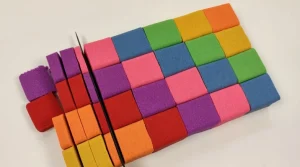
What Is So Special About Kinetic Sand? The Fascinating Science
Discover what makes kinetic sand so special — from its unique texture to the fascinating science behind its magical movement.
#1 Toys Manufacturer in China. WhatsApp: +86 180-0088-4063. Email: [email protected]
#1 Toys Manufacturer in China. WhatsApp: +86 180-0088-4063. Email: [email protected]
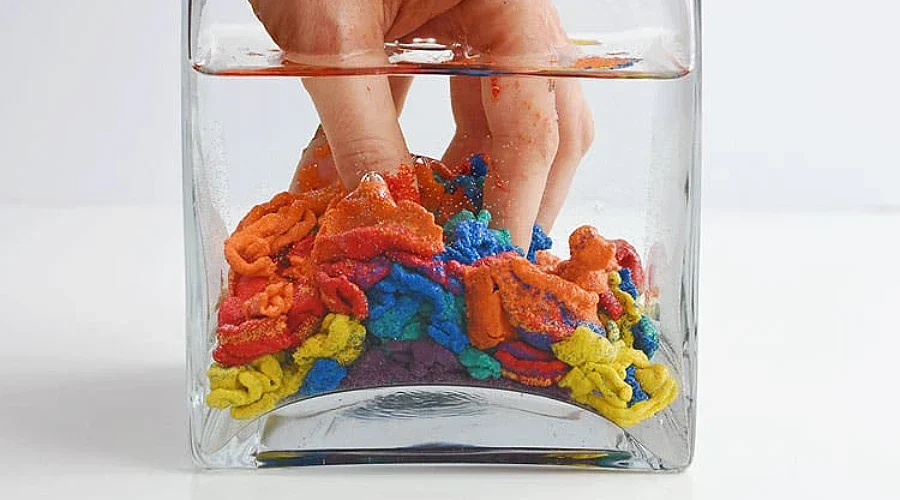
Sensory toys have become a staple in homes, schools, and therapy centers. They offer a hands-on way to learn and explore. Among these, magic sand and kinetic sand stand out for their unique qualities.
But are they the same? This question often arises for parents, teachers, and sensory play enthusiasts. Both seem similar—sand-based and fun to play with—but their properties and uses differ in surprising ways.
Magic sand is a fascinating material with a secret: it doesn’t get wet. Unlike regular sand, magic sand stays dry even when submerged in water. Its hydrophobic (water-repellent) properties make it a favorite for science experiments and creative sensory play. Kids and adults alike marvel at how it behaves differently from anything they’ve seen before.
>> What’s Inside Magic Sand? A Closer Look at Its Composition
At its core, magic sand is ordinary sand coated with a special substance. The sand grains are treated with silicone, which creates a thin layer that repels water. This coating prevents water molecules from sticking to the sand, keeping it dry no matter how wet it gets.
Imagine sprinkling magic sand into a bowl of water. Instead of sinking like normal sand, it forms clumps or shapes that look as if they’re underwater sculptures. This unique property comes from the silicone layer, which acts like a waterproof shield.
Magic sand’s simplicity in composition makes it safe and reusable, but it’s also sensitive to oils or soap, which can weaken its hydrophobic effects.
The science behind magic sand lies in the molecular structure of its coating. Silicone molecules are nonpolar, meaning they don’t mix with water, a polar substance. This creates a barrier that forces water to bead up and roll off the sand grains.
Because of this property, magic sand is often used in educational settings. Teachers might use it to explain surface tension or demonstrate how oil spills affect marine ecosystems. At home, it can be used to create colorful underwater designs, offering a fun way to engage with basic chemistry concepts.
Magic sand is known by many names, reflecting its unique properties and uses. Some people call it waterproof sand, highlighting its resistance to water. Others refer to it as hydrophobic sand, emphasizing the scientific basis of its behavior.
Other names, like dry sand or never-wet sand, describe how it feels after being in water. No matter the name, its distinct ability to repel water remains its defining feature.
While it’s often compared to kinetic sand, magic sand is entirely different. It’s not soft or moldable like kinetic sand; instead, it’s granular and primarily used for experiments rather than sculpting or stress relief.
Kinetic sand is a sensory toy with a magical twist—it moves, molds, and flows in ways regular sand never could. It’s soft and stretchy yet firm enough to hold a shape. Unlike magic sand, kinetic sand isn’t about repelling water but creating a tactile experience that’s hard to put down.
>> What makes Kinetic Sand Kinetic? Why Does It Flow?
Kinetic sand is made from 98% regular sand combined with 2% of a binding agent, often polydimethylsiloxane. This agent gives it its signature moldable texture, allowing it to hold shapes without feeling sticky.
The sand grains are coated in a silicone oil-like material, making them stick to each other rather than your hands or surfaces. This quality makes kinetic sand easy to clean up, adding to its appeal as a playroom staple.
Imagine holding a handful of kinetic sand. It feels soft, almost liquid, as it flows through your fingers, yet you can pack it tightly to create a perfect cube or tower. Its texture is both relaxing and engaging, making it a favorite for both kids and adults.
The secret of kinetic sand lies in its molecular structure. The coating on the sand particles creates a balance: they stick to each other but not to other surfaces. This gives it a sticky-yet-non-sticky feel, which many describe as therapeutic.
In sensory play, kinetic sand is a go-to material. It can be molded into shapes, used to build structures, or simply squished for fun. Occupational therapists also use it to help children with fine motor skills, offering a hands-on way to practice grasping, squeezing, and shaping.
Kinetic sand is often called moldable sand because of its ability to hold shapes. It’s also known as sensory sand, reflecting its role in sensory activities. Other names like motion sand or soft sand highlight its flowing, almost liquid-like movement.
Despite its similarities to magic sand, the two are very different. Kinetic sand is designed for molding and shaping, while magic sand focuses on its hydrophobic properties. Both are unique, but each serves a distinct purpose in sensory play.
Magic sand and kinetic sand may seem like polar opposites in how they behave, but they share surprising similarities. Both are sand-based sensory toys that engage the senses in unique ways, making them staples in playrooms, classrooms, and therapy settings.
At their core, both magic sand and kinetic sand are built on the same foundation: sand. For magic sand, it’s regular sand coated with a hydrophobic substance, while kinetic sand uses a special polymer binder to give it a soft, moldable texture.
Despite their differences, both retain the natural grainy feel of sand, connecting users with a familiar material in an unconventional way. This makes them popular for hands-on exploration and play.
>> Exploring Kinetic Sand: The Science Behind ASMR Effects
Both types of sand help develop creativity and motor skills. When kids mold shapes with kinetic sand or experiment with magic sand in water, they engage their cognitive and tactile senses. Teachers often use both for STEM activities, like exploring the properties of hydrophobic materials or experimenting with gravity and shape stability.
For adults, the therapeutic value is just as important. Squishing kinetic sand or running fingers through magic sand can provide stress relief. Their textures are calming, offering a sensory escape during a busy day.
Imagine a group of kids in a classroom, some testing how magic sand resists water, while others build sand towers with kinetic sand. Each is learning, but in a way that feels more like play than work.
Both magic sand and kinetic sand have earned their place as crowd favorites. You’ll find them in homes, classrooms, and therapy centers alike. Kids love them for their versatility—magic sand for its water-repelling “magic” and kinetic sand for its moldability.
Adults often use these sands as fidget tools or stress-relievers. In therapy sessions, they’re great for activities that improve hand strength and focus. Their ability to cross age groups shows how universally engaging they are.
>> Science Classroom: What Is Magic Sand Used For
While magic sand and kinetic sand share a sandy foundation, their differences are striking. From how they feel to how they interact with water, each offers a distinct experience.
| Aspect | Magic Sand | Kinetic Sand |
|---|---|---|
| Texture and Feel | Dry, granular, and lightweight. | Soft, stretchy, and moldable. |
| Interaction with Water | Repels water; remains dry when submerged. | Absorbs water; loses its moldable texture. |
| Primary Uses | Science experiments, water-based activities. | Sculpting, stress relief, and creative play. |
| Maintenance | Easy to clean but prone to scattering. | Requires airtight storage to retain texture. |
| Storage Requirements | Minimal; doesn’t degrade over time. | Must be stored in sealed containers. |
Magic sand feels dry and grainy, almost like regular sand but lighter. Its hydrophobic coating keeps the grains separate, so it doesn’t clump. Imagine holding it in your hand and feeling it slip away like desert sand in a windstorm.
Kinetic sand, in contrast, feels soft and stretchy. It’s moldable yet flows gently between fingers, almost like a thick liquid. This unique texture comes from its polymer binder, which gives it an uncanny ability to hold its shape while staying non-sticky.
Magic sand has a “magic trick”—it repels water. When submerged, it forms a shimmering, dry layer around each grain. Kids love watching how it stays untouched by water, making it perfect for water-based science experiments.
Kinetic sand, however, doesn’t share this hydrophobic trait. It absorbs water, which alters its texture and ruins its moldability. If you drop some kinetic sand in water, don’t expect it to bounce back; it’s best used dry.
Magic sand is often seen in classrooms or science kits, where it demonstrates hydrophobic properties or serves as a tool for creative water play. It’s less about sculpting and more about exploring its scientific quirks.
Kinetic sand, on the other hand, is all about sculpting and play. It’s a favorite for creating castles, shapes, or stress-relief activities. Its tactile quality makes it a go-to for relaxation or open-ended creativity sessions.
Magic sand is straightforward to maintain. It doesn’t stick to surfaces, but it can scatter easily. A tray or controlled area helps keep cleanup manageable.
Kinetic sand requires a bit more care. To keep its unique texture intact, it must be stored in an airtight container. Exposure to air or moisture can degrade its polymer binding, leaving it less pliable.
For families or classrooms, knowing these differences can make a big impact. Magic sand thrives in structured, water-based activities, while kinetic sand shines in creative play sessions.
Selecting between magic sand and kinetic sand depends on how you plan to use them, who will use them, and your budget. Each type has unique features to consider.
If the goal is education, magic sand might be a better fit. Its hydrophobic properties make it ideal for science experiments, especially those involving water. Teachers and parents often use it to explain concepts like surface tension.
For sensory play or therapeutic activities, kinetic sand is more suitable. Its soft and moldable texture allows kids and adults to shape, squeeze, and stretch it, making it a favorite for relaxation or stress relief.
Age plays a big role in choosing the right sand. Magic sand can be messy because of its dry, granular texture, so it’s better suited for older children who can handle cleanup.
On the other hand, kinetic sand is easier to manage and safer for younger children, as long as they’re supervised. Its sticky-yet-non-sticky nature minimizes scattering, reducing cleanup effort.
Budget is another important factor. Magic sand is often less expensive and doesn’t degrade over time, as its properties remain stable even when exposed to air.
However, kinetic sand might require more investment upfront. It needs airtight storage to maintain its texture and prevent drying out. This ongoing care could impact long-term costs.
While magic sand and kinetic sand may seem similar, they serve different purposes. Magic sand is best for science experiments and educational activities, while kinetic sand is ideal for sensory play and stress relief. Consider your needs, age group, and budget before choosing the right type.
Mixing magic sand and kinetic sand isn't recommended. They have different textures and properties. Magic sand repels water and maintains a dry feel, while kinetic sand sticks together, making it ideal for molding. Combining them could disrupt their unique properties, leading to a less enjoyable sensory experience.
While magic sand is generally safe for older children, it can be messy. It may be difficult for younger children to manage, especially if they tend to scatter materials. Always supervise play, and ensure the sand is kept in a controlled environment to avoid spreading it around the house.
Kinetic sand is best used indoors due to its sticky texture. It can attract dirt, and if used outdoors, it may lose its moldable properties. For outdoor use, it's better to choose a different sensory sand that won’t be negatively affected by dust or weather conditions.
Kinetic sand is quite durable and can last a long time if stored properly. Keeping it in an airtight container is key to preserving its moldable texture. Over time, it may dry out if exposed to air for too long, but with proper care, it can be reused for months without losing its unique properties.
Yes, magic sand can be used in certain art projects, especially for creating textured surfaces or as a fun element in science experiments. Its unique ability to stay dry even when wet makes it a great tool for experimentation, but it may not be ideal for traditional artistic techniques like painting or sculpting.
More Related...

Discover what makes kinetic sand so special — from its unique texture to the fascinating science behind its magical movement.
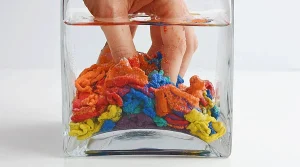
Is magic sand safe for kids? Explore safety facts, age guidelines, and expert advice to ensure fun, creative, and secure sensory play.
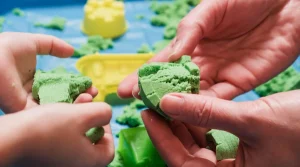
Kinetic sand toys offer fun and education in one—find out how they support child development, relaxation, and imaginative play.
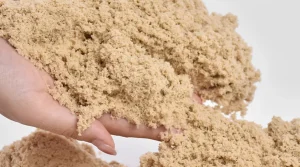
Curious about magic sand? Explore how it repels water, what it’s made of, and why it’s a hit in science classrooms and homes.

Our team will answer your inquiries within 48 hours.
Copyright © 2025 GuangDong AKIA Technology Co,. Ltd. All Rights Reserved